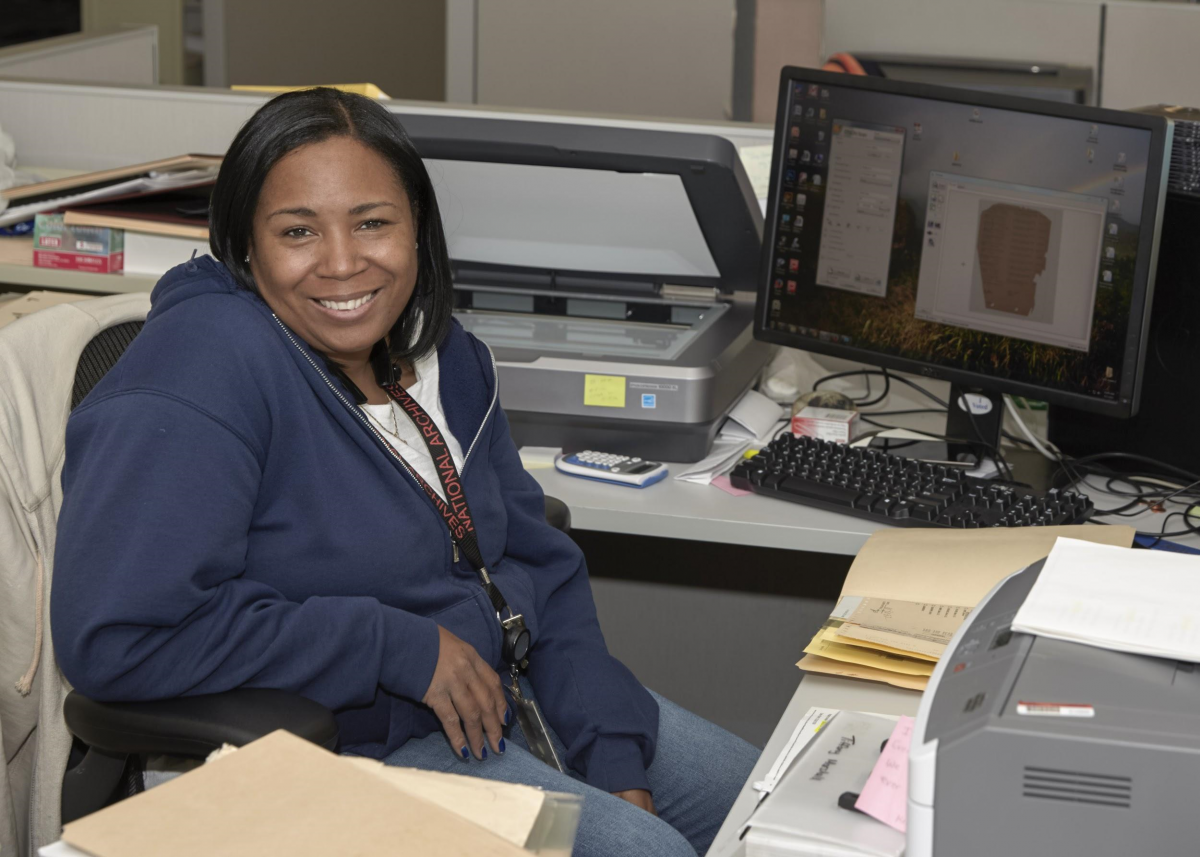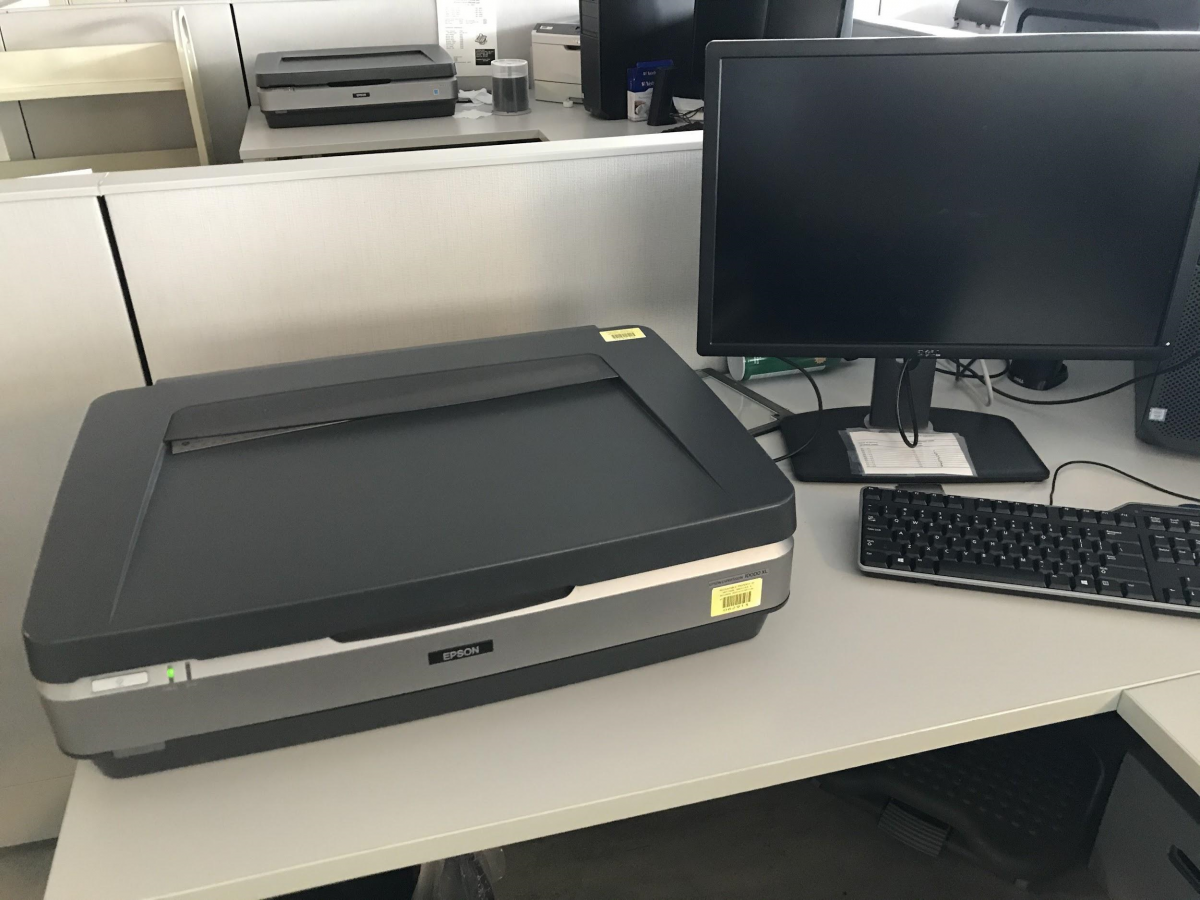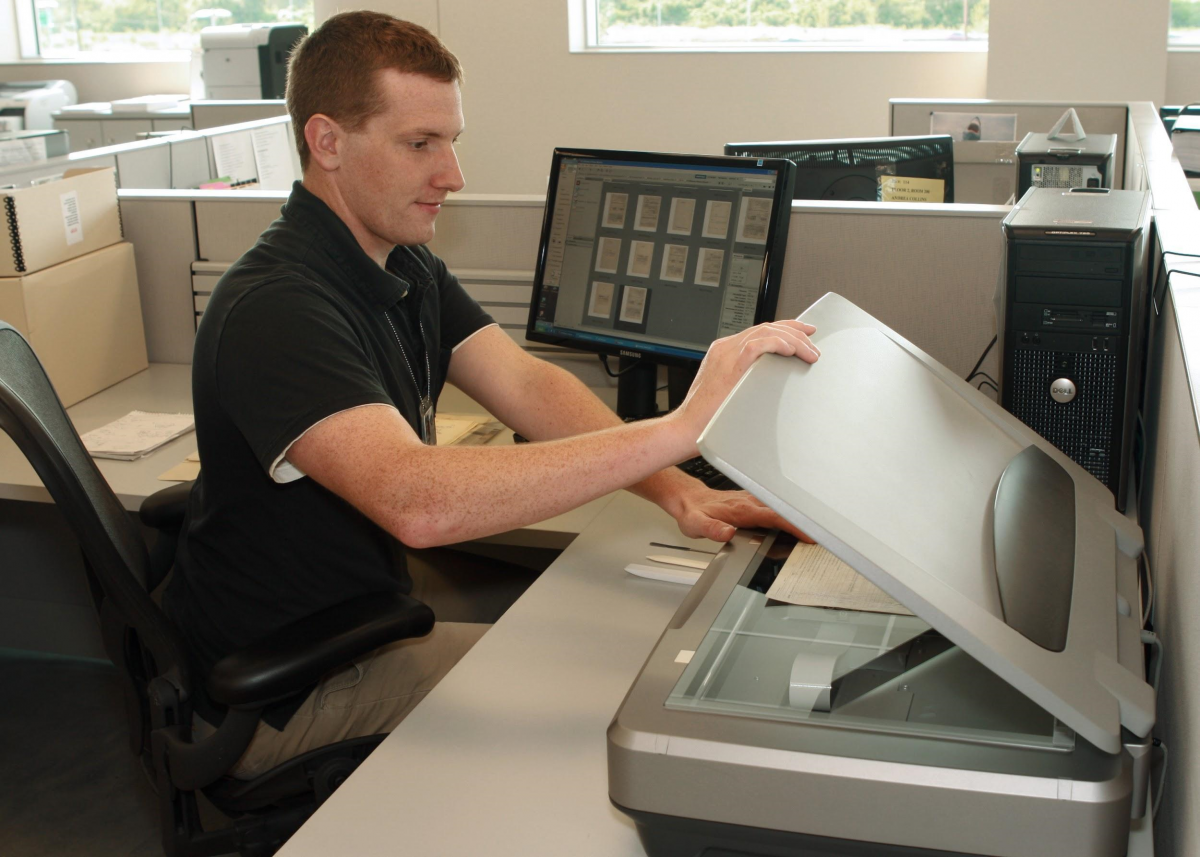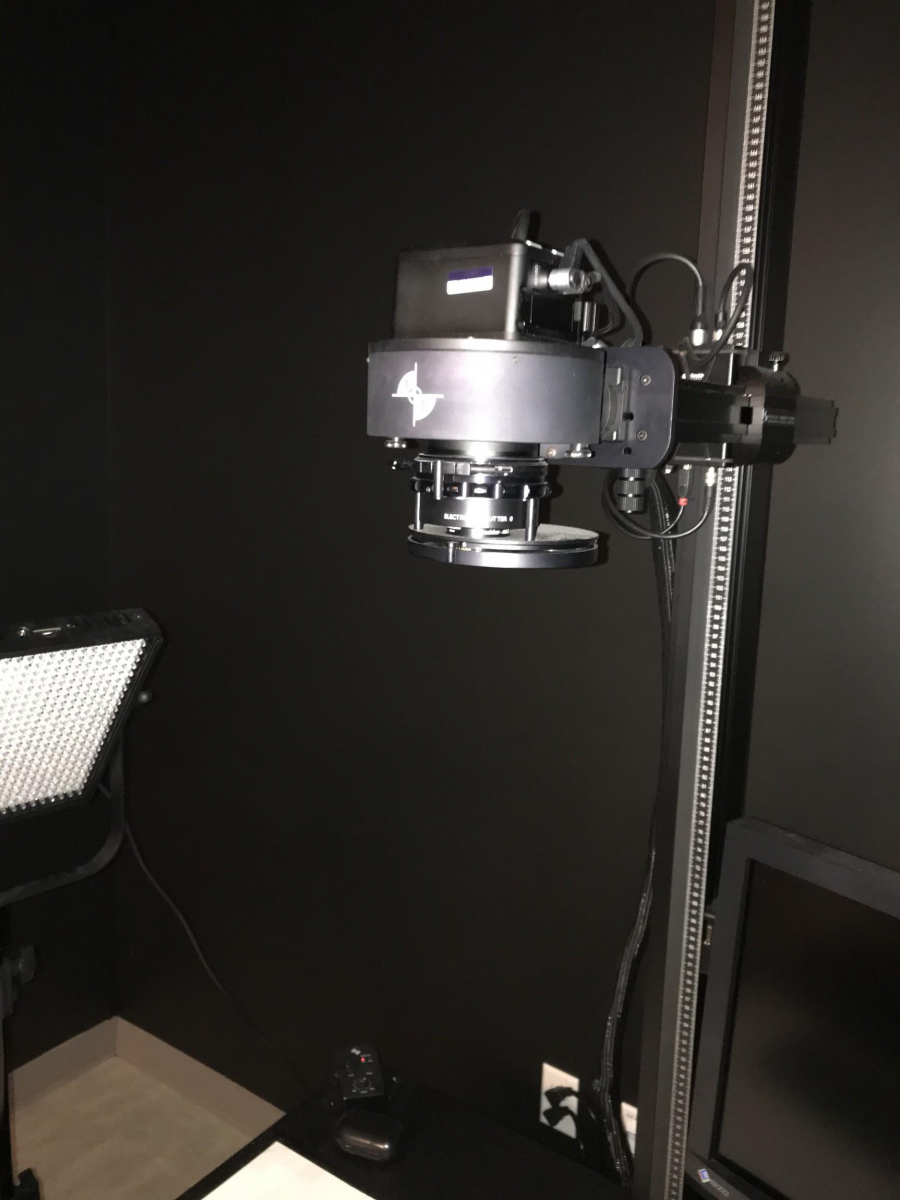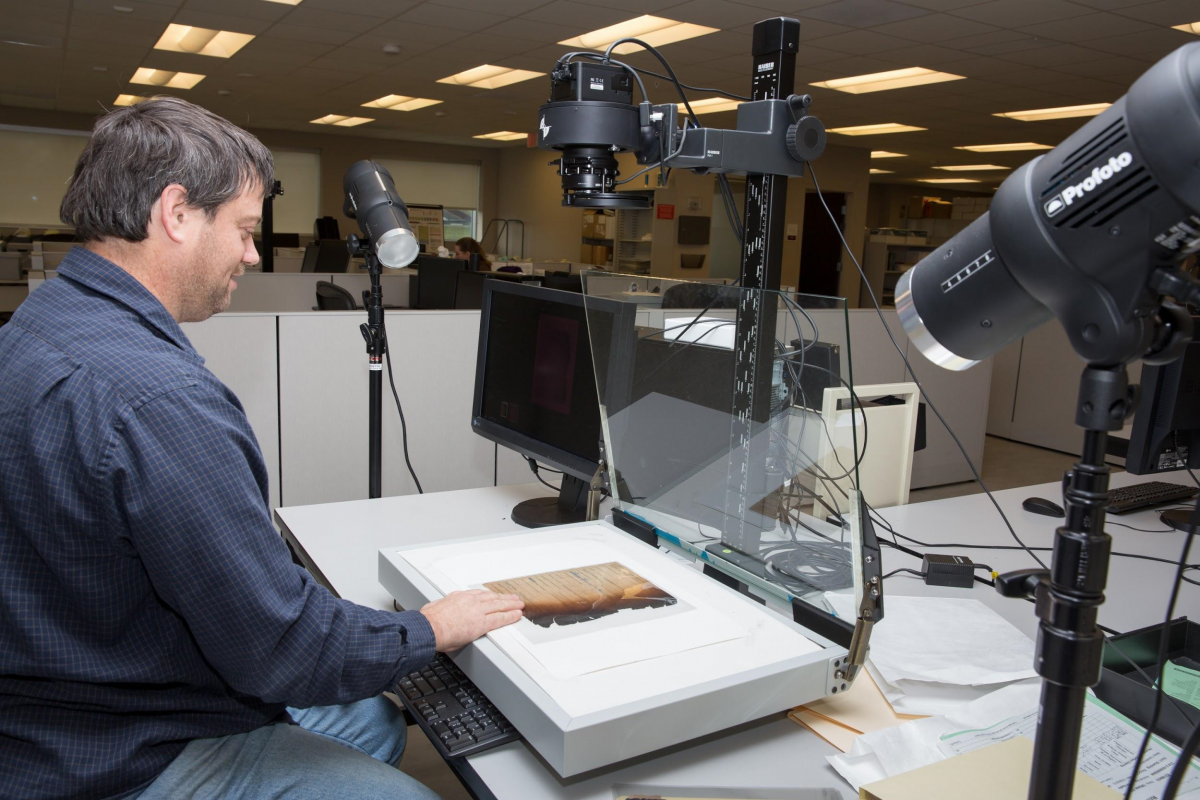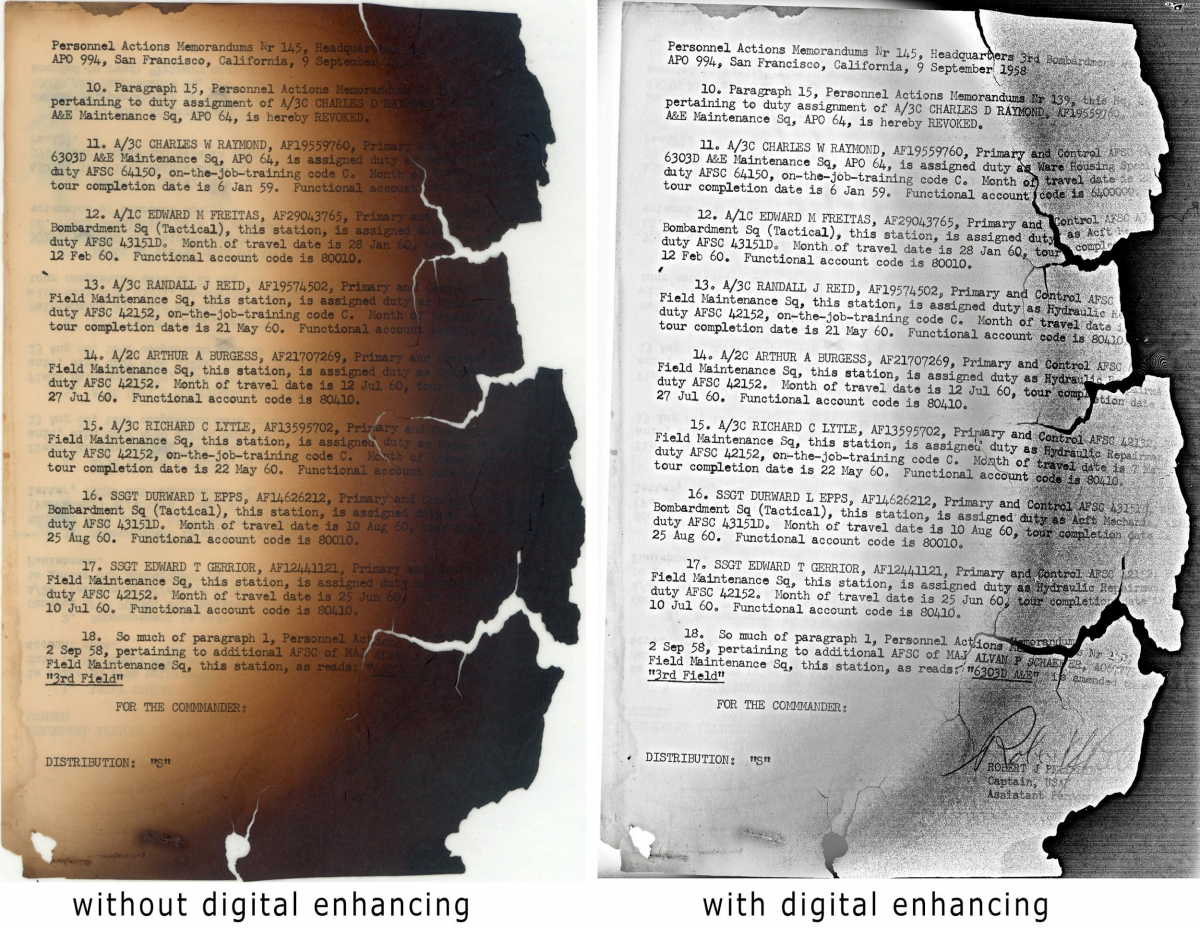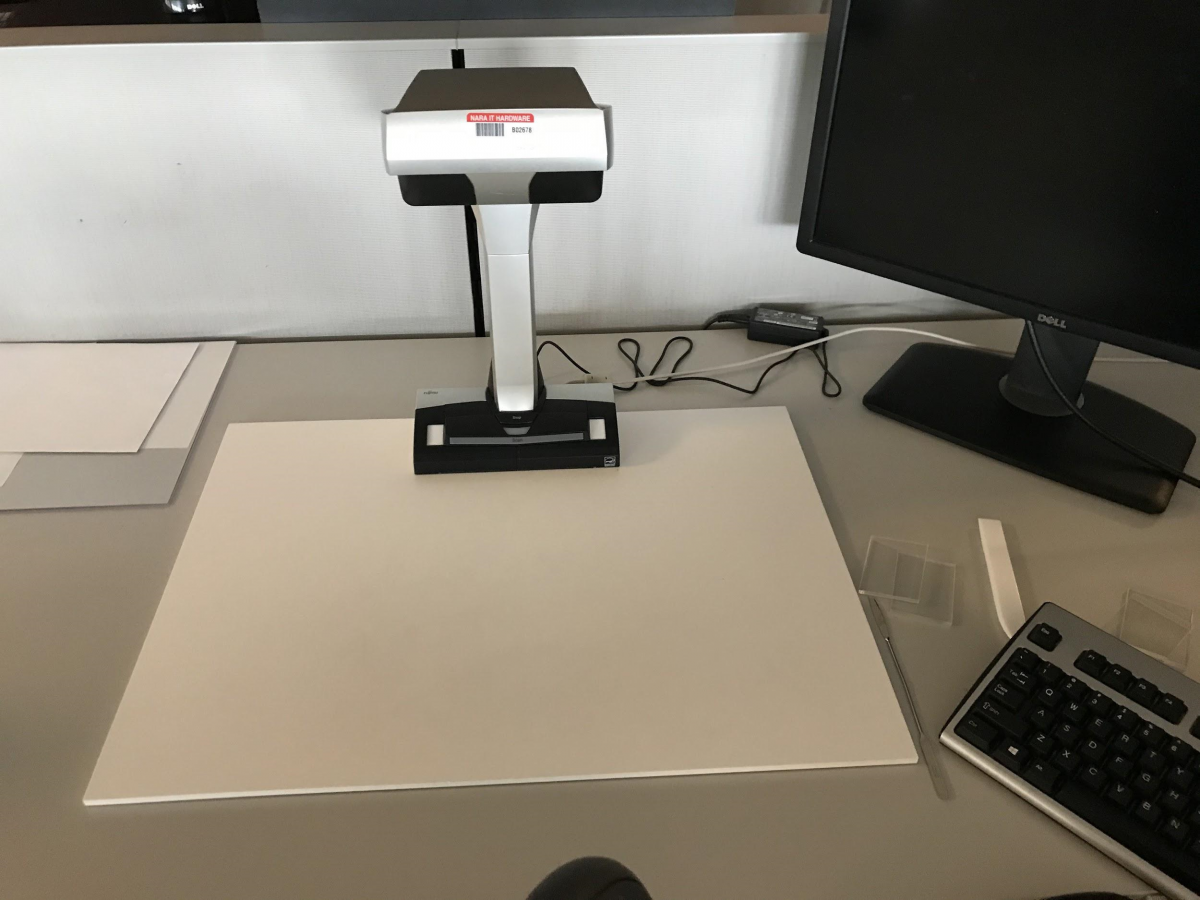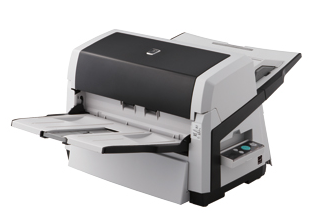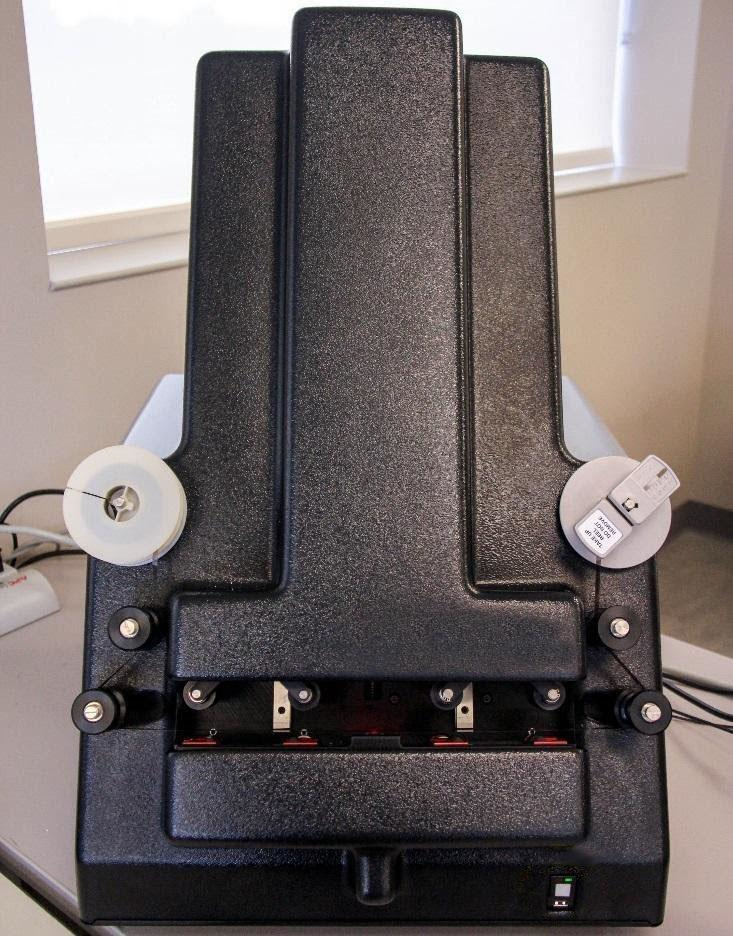
Records Reformatting
Reformatting Lab
When the St. Louis Preservation Division started, microfilm was the primary reformatting medium for archival records. Today, we no longer microfilm documents; instead we use digital technology for reformatting.
Preserving the existing microfilm in NARA’s holdings is important because it:
- Is a proven format that, when properly created and stored, has a life expectancy of 500 years
- Is a stable technology that is fully supported by numerous national standards
- Can be read by the human eye using only light and some magnification
- Is a technology currently accepted by NARA as a permanent media
The Reformatting Lab continues to repair and maintain the microfilm in use at the National Personnel Records Center and the National Archives at Saint Louis. In many instances, digitization provides better access to deteriorating microfilm and eliminates the need to access the originals.
Digital Imaging
Within the Reformatting Lab, there are different approaches to scanning documents. Factors such as document condition, media and project requirements dictate what method of scanning is selected.
Flatbed Scanners
The flatbed scanner produces a high-resolution image and is best for single-sheet documents that are in stable condition. Flatbed scanners use a light bar and a scanner head that moves across the scanning platen converting the document image into a bitmap image. The closed top lid gently holds the document in place and keeps ambient light away from it during scanning. Many of these scanners come equipped with an adapter to scan film negatives, transparencies, and slides.
The Reformatting Lab uses flatbed scanners to digitize Persons of Exceptional Prominence (PEP) documents from the Official Military Personnel Files (OMPF) held in the National Archives at St. Louis. Due to high demand and interest in these records, a DVD of each PEP service record containing high resolution images in a user-friendly digital format is produced for reference use or for public purchase. Many of these records are now online in NARA’s catalog. The flatbed scanners are also used to respond to on-demand scanning of photographic negatives for the St. Louis Archival Research Room.
Overhead Imaging
The overhead camera is used on records that are heavily damaged, particularly those that are distorted. It is also used for records that are fastened together. This is a safer way to image because, unlike the flatbed, there is no lid pressing down on the documents. It is a faster scanner as well since the digital image is created by the shutter on the camera opening and closing in a fraction of a second.
An overhead camera with an infrared filter is used to image military personal files that were badly burned during the 1973 fire. Because inks burn at a higher temperature than the paper, traces of carbon from inks that will absorb infrared light may remain. The infrared filter allows the camera to pick up this information. Computer software enhances the contrast between the ink and the burned paper, recovering content not visible to the human eye. Providing a digital copy of the record is also important for preservation purposes, as it makes the information available to reference technicians, research room patrons and the general public while protecting the fragile paper records from further damage due to handling.
Although we use software to produce the best possible image, we do not use digital enhancement to make the image look “good” or “perfect.” We use it specifically on burned records to retrieve as much illegible content as possible.
An overhead scanner is different from an overhead camera because it uses a scanner head along with a light source to sweep across the document from above. While they are faster than a flatbed scanner, they have a lower resolution. We are using such scanners to reformat Burial Records and make PDFs available on the National Archives Catalog.
These scanners are also used in the Decontamination Lab to scan mildly or moderately burned records as a faster alternative to treatment. This process saves time by not having to clean these records, and a digital copy is made for immediate and future use.
High-speed Auto-feed Scanners
High-speed auto-feed scanners are used only when the media is stable, sturdy and of the same size. Before using this type of scanner, records must be fully prepared to ensure no damage occurs during the auto feed. The Air Force Award cards in NARA’s online catalog are imaged using this scanner.
Microfilm Scanner
The microfilm scanner reformats 16mm and 35mm microfilm into a digital format and can be adjusted to create the best possible image for each microfilm record based on film type, reduction ratio, polarity, and image orientation.
The Reformatting Lab uses this scanner to digitize the microfilm collections commonly known as the Morning Reports. The images are stored on DVD’s and primarily used in the St. Louis Archival Research Room.
For more information:
